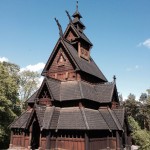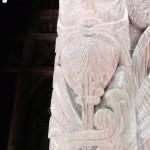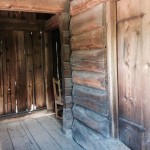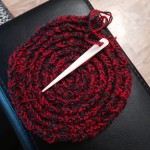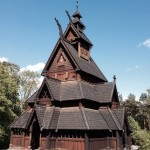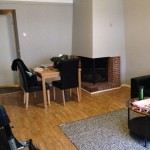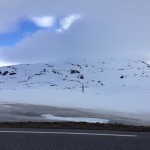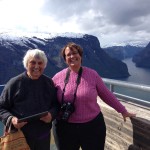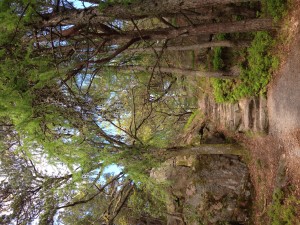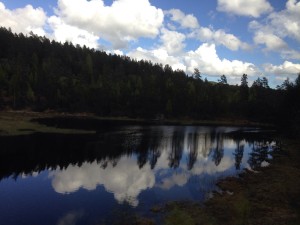Crossing the mountains between Kristiansand and Lofthus, Ullensvang wasn’t what I expected. Once we got high where there was snow next to the road we no longer passed farms, instead we began to see winter cabins. As we climbed, the land became covered with snow with snow covered lakes melting around the edges. It felt like we were on top of the world. Snow and gently rounded peaks in every direction. Every few kilometers revealed a couple vacation homes or occasionally clusters of apartments in small communities or large resorts.
My experiences with mountains has been primarily in the Cascades of Oregon and Washington. I think of roads going up one side, reaching the pass, and descending into the lowlands below. These Norwegian mountains redefine what it can mean to cross a mountain range.
Not wanting to drive on snowy roads in an unfamiliar country, I planned the trip for late May. I was happy to see this highway, bare and dry, stretching across the snowy mountain tops. We drove for hours between the white domed mountain top and through tunnels. Many tunnels were only a few hundred meters long, but a length of one kilometer seemed typical and two of the tunnels were over 4k. Those tunnels were too narrow to have a yellow line down the middle, still, with every truck we passed in the dim light, I grew more comfortable.
After we came down from the snow, the road curved in and out following the contours of the land and often dove through a mountain revealing another of the endless steep valleys below. Once again we passed small farms with sheep and grassy fields. Many of these farms in the Hardangerfjorden region grew fruit trees — apples, pears, cherries, and plums. Many of the trees were clothed in pink or white blossoms. At the tip of Sørfjorden (fjord) we drove through Odda, a beautiful town I’d like to see again.
All along the route the road went from having that welcome yellow center line to not having it, and occasionally narrowing briefly to where you could barely pass a car. A couple times I pulled way over to let a truck pass. But mostly I just needed to pass on the outside of the pavement. Guardrails offered a small comfort when the fjord dropped dramatically next to the road. It’s hard to describe how steep the fjord walls are. Imagine a hillside where the steep roof peaks on the houses next to the road were often just a bit above street level. Their driveways, when they had one, jutted off the road, immediately turned to parallel the road, and dropped steeply to a somewhat level parking place.
Our bed and breakfast stay was in an old house in a tiny village. A torrent next to the house flowed down the fjord walls to the salt water below. Inside the house carved wood decorated door frames and lintels.
When we checked in, they gave us a nicer room than the one we reserved, and we completely enjoyed our stay. We ate dinner in their restaurant, where we were surprised to see most of the menu entrees were Thai dishes. Every large city we’ve visited — Oslo, Trondheim, and Kristiansand — had at least one Thai and one Indian restaurant. The cities also have several international groceries, but most restaurants serve typical Norwegian or European cuisine.
The hotel breakfast, just as we saw at the other hotels, offered a buffet of hard and soft boiled eggs, Brie, Norwegian brown cheese, slices of mild cheeses, prosciutto and other sliced cured meats, smoked salmon, sweet pickled herring, tomato based pickled herring, sardines in oil, sardines in tomato sauce, cucumbers, carrots, tomatoes, bread, and jams. And of course, strong Norwegian coffee, a variety of teas, orange juice, apple juice, and milk.
Nancy Samuels
Like this:
Like Loading...

